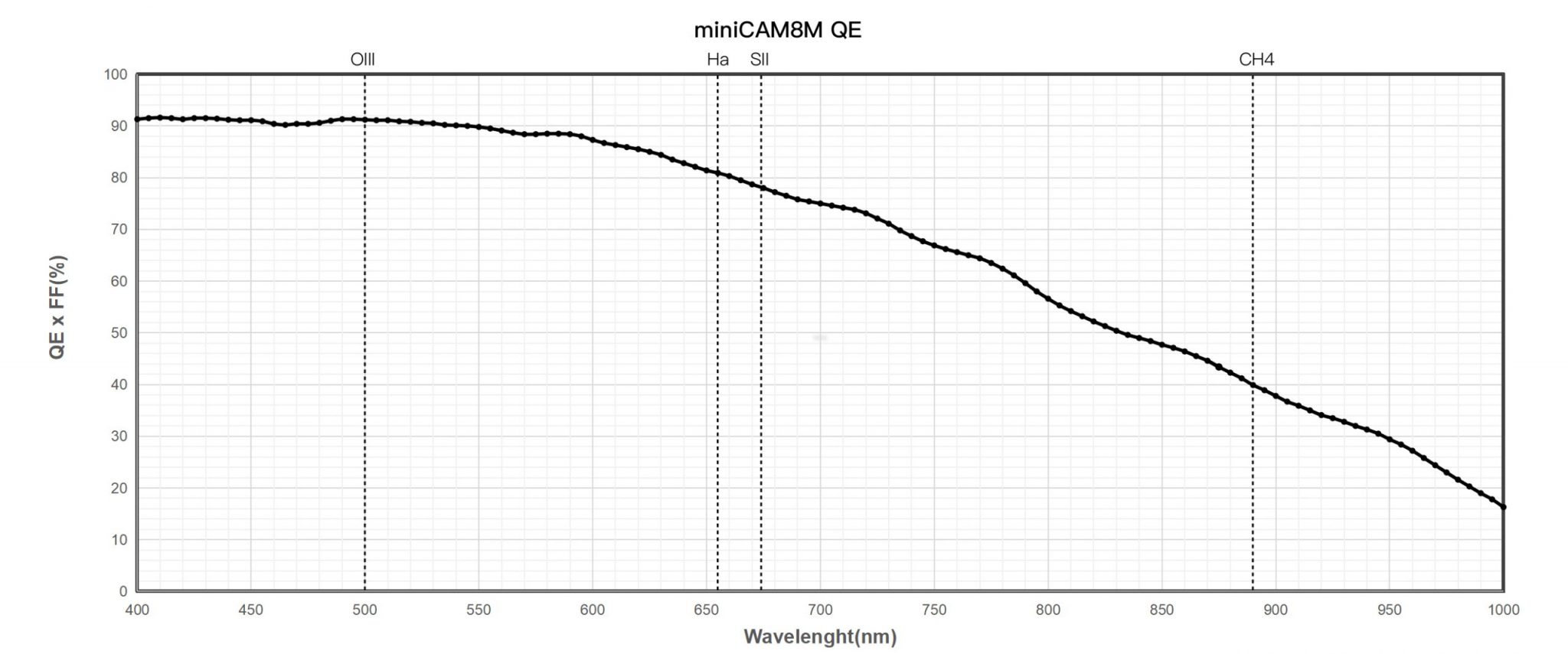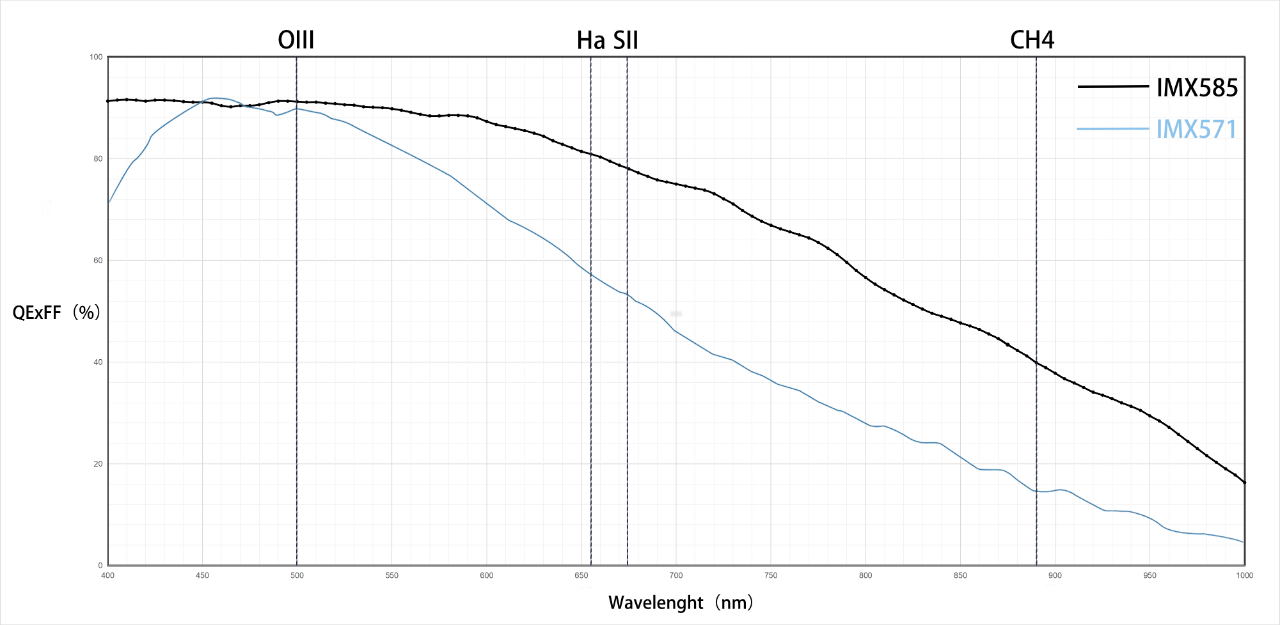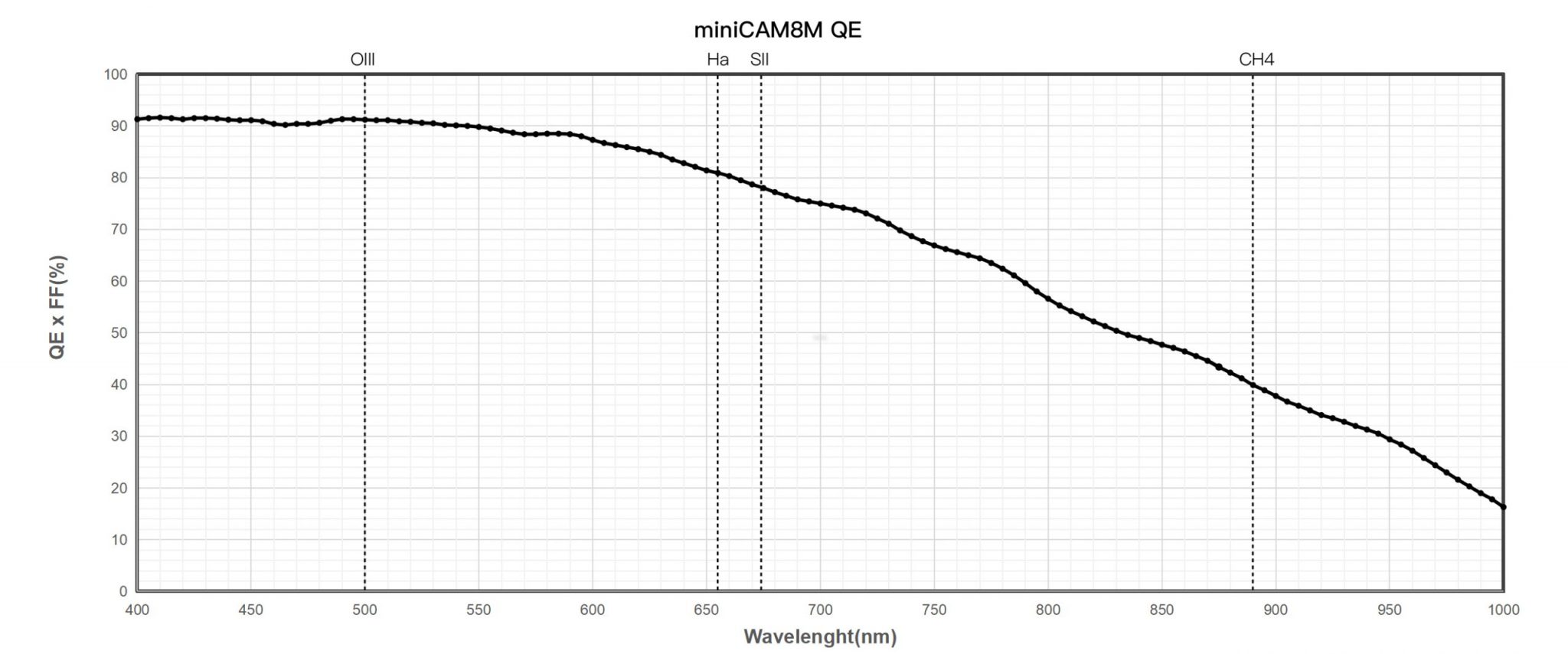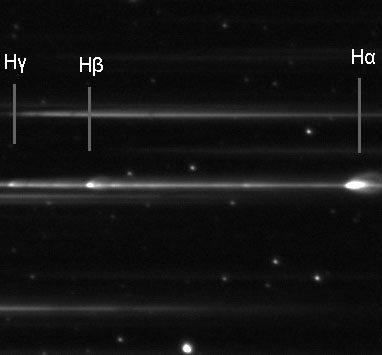Quantum efficiency is a crucial measure of a sensor’s sensitivity. The newly released QHY miniCAM8, featuring the IMX585 sensor, delivers exceptional QE performance.
 Quantum Efficiency Curve of miniCAM8
Quantum Efficiency Curve of miniCAM8
As shown in the image above, the miniCAM8M performs exceptionally well across various wavelengths, with strong quantum efficiency in the SII, Ha, OIII, and CH4 bands.
OIII (500.7nm & 496nm): The excitation of oxygen atoms produces intense OIII emissions, which are observed in high-temperature, high-energy astronomical phenomena like planetary nebulae and supernova remnants. The miniCAM8 achieves a quantum efficiency of 91.2% in this band.
Ha (656.3nm): The Hα band is crucial in astrophotography, as many emission nebulae are illuminated by light from hydrogen atoms excited in interstellar gas. The miniCAM8 delivers a quantum efficiency of 80.9% in this band.
SII (671.6nm): The SII band is essential for observing phenomena such as supernova remnants and chemically reactive regions in interstellar matter. The miniCAM8 achieves a quantum efficiency of 78.7% in this band, enabling it to effectively capture emissions from excited sulfur atoms and reveal the distribution of sulfur elements in celestial objects.
CH4 (889nm): Primarily used for capturing infrared details of planets like Jupiter and Saturn, the miniCAM8 reaches a quantum efficiency of 40.1% in this band.
 Quantum Efficiency Curve Comparison: IMX585 vs. IMX571
Quantum Efficiency Curve Comparison: IMX585 vs. IMX571
When comparing the quantum efficiency (QE) curve of the IMX585 sensor in the miniCAM8 with that of mainstream cooled cameras on the market (using the IMX571 as a representative, given its similar design and QE to the IMX455 and IMX533), we can clearly see the superior performance of the IMX585. In key wavelengths such as OIII, Ha, SII, and CH4, the IMX585 exhibits higher QE than the IMX571. This means that in these specific wavelengths, the IMX585 can more effectively capture photons and convert more light into electrical signals, resulting in higher-quality, clearer images or data.
The high QE of the IMX585 offers numerous advantages for capturing high-quality astronomical images, including enhanced signal-to-noise ratio, improved sensitivity to faint objects, better color fidelity and spectral information capture, reduced exposure time, and increased dynamic range and detail capture capability.





![[User’s Interview] Jacob Heppell’s Astrophotography Story](https://www.qhyccd.com/wp-content/uploads/20220725105.png)
